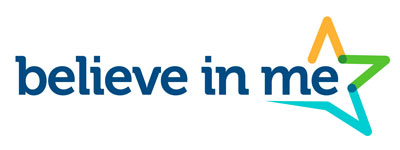How Transportation Access Shapes Opportunities for Marginalized Youth
Publish Date: August 15, 2025, 0:00
When was the last time you considered how a missed bus could derail a young person’s future? For marginalized youth, reliable transportation is far more than just a convenience—it’s often a lifeline to education, employment, and personal growth. In this post, we explore how gaps in transportation access create barriers to education and opportunity. We also illustrate how strategic investments in transportation equity can empower youth and transform communities.
A quick Google search reveals that people are asking: “How does transportation access affect education?”, “What are the barriers to education for marginalized youth?”, “How can transportation equity be improved?”, “How does poor transit shape youth opportunities?”, and “What role should policymakers play in enhancing youth transportation access?”. By addressing these inquiries, we reinforce Believe in Me’s longstanding commitment to creating inclusive, community-driven solutions.
Join us as we dissect the link between transportation access and youth outcomes, share real-life case studies, and offer actionable steps for policymakers, community leaders, and transportation advocates to drive reform. After all, every child deserves a fair shot at success—starting with getting to the right place.
Overview: How Transportation Access Empowers Marginalized Youth
Reliable youth transportation access is no accident. It encompasses infrastructure improvements, innovative transit solutions, and community-based planning. When youth have consistent access to safe and efficient transportation, they can attend schools, after-school programs, and extracurricular activities without hurdle. Conversely, inadequate access exacerbates existing social inequities, limiting educational opportunities and future employment options.
Research from the Brookings Institution shows that communities with robust transportation networks tend to have higher educational outcomes and improved economic mobility (Brookings Institute, 2023). Meanwhile, the American Public Transportation Association (APTA) emphasizes that eliminating transit inequities is a crucial step toward building more sustainable, resilient communities (APTA, 2023).
Believe in Me, an organization dedicated to uplifting marginalized voices through accessible opportunities, has long championed initiatives that bridge the transportation divide. Their projects serve as a model for how improved transportation can be a catalyst for social change.
Frequently Asked Questions on Youth Transportation Access
- How does transportation access impact education?
Reliable transportation ensures that students can attend classes, participate in extracurricular activities, and access educational resources—minimizing absences and enhancing academic performance. - What are the barriers to education for marginalized youth?
Barriers include long commutes, infrequent transit schedules, high transportation costs, and safety concerns. These challenges can cause youth to miss school or extracurricular opportunities, perpetuating cycles of underachievement. - How can transportation equity be improved?
Enhancing transportation equity involves investing in reliable public transit, creating safe routes for youth, and ensuring affordable options that serve underserved neighborhoods. - How does poor transit shape youth opportunities?
Poor transit can isolate communities, decrease access to quality education, and limit exposure to cultural and professional experiences—all key components for personal growth and success. - What role should policymakers play?
Policymakers can drive change by advocating for transportation initiatives that prioritize marginalized communities, securing funding, and integrating youth-friendly transit policies.
Case Studies of Successful Youth Transportation Initiatives
Let’s bring theory into the real world. Several initiatives demonstrate the transformative power of reliable transit for marginalized youth.
Case Study 1: The School Bus Initiative in Urban Neighborhoods
In a bid to tackle chronic absences, a city in the Midwest piloted a specialized school bus program designed specifically for high-need neighborhoods. This program, backed by local government and community groups, provided safe, timely rides for hundreds of high school students. The result? Improved punctuality, higher attendance rates, and a noticeable uptick in academic performance.
Youth participants reported feeling more secure and supported – and for many, the bus was more than just a ride; it symbolized a commitment to their future. Such real-life examples echo Believe in Me’s mission of breaking down barriers to opportunity.
Case Study 2: Community-Driven Bike-Share Programs
In another innovative approach, a major metropolitan area teamed up with local nonprofits to launch a bike-share program, with a special focus on underserved communities. The program offered devices at little to no cost while ensuring safe cycling lanes and educational workshops on maintaining and riding bicycles.
These bike-share programs not only bridged short-distance transit gaps but also promoted health, social interaction, and community engagement. One participant shared that this initiative gave her a newfound independence and helped her secure part-time work—an essential step toward long-term success.
The Role of Transportation Access in the Community
Transportation access is more than mundane logistics—it’s about nurturing hope and opportunity. When communities invest in safe, efficient, and inclusive transit options, they create environments where youth thrive. Imagine a city where every young person can reach school, participate in community programs, and explore career paths without the dread of unreliable transportation. That’s a future worth fighting for.
But the benefits extend far beyond individual achievements. Enhanced transit systems help reduce traffic congestion, lower carbon emissions, and encourage economic development in diverse neighborhoods. In this way, transportation equity catalyzes broader societal progress.
Platforms like Believe in Me have incorporated transportation challenges into their broader strategies for youth development. By addressing transit disparities, they not only facilitate educational and career opportunities but also help establish trusting relationships between marginalized communities and civic institutions.
Actionable Ways to Get Involved
So, how can you, as a policymaker, community leader, or transportation advocate, drive change for marginalized youth? Here’s a roadmap to create youth-friendly transit solutions:
- Advocate for Dedicated Funding: Lobby local and state governments for transportation budgets that prioritize youth access. Reach out to your representatives and share compelling case studies and research from the Brookings Institution and APTA.
- Collaborate with Community Organizations: Engage with groups like Believe in Me to identify local barriers and craft innovative, community-led transit solutions.
- Promote Inclusive Policy-Making: Ensure that transit policy discussions include voices from marginalized communities. This inclusivity leads to better-designed, more efficient transit systems.
- Support Technology-Driven Solutions: Encourage the adoption of apps and digital platforms that provide real-time tracking and accessibility features for public transportation.
- Champion Safety and Accessibility: Invest in infrastructure that not only makes transit reliable but also safe for youth—learn from pilot projects and success stories shared by Believe in Me initiatives.
Every action taken can pave the way for more youth-friendly transportation policies. Your efforts today can open up a world of opportunities for tomorrow’s leaders.
Conclusion: Advocating for Transportation Equity to Empower Youth
Inadequate transportation access is a critical barrier for marginalized youth—it stifles potential, limits education, and holds back community progress. Through initiatives that boost youth transportation access and promote transportation equity, we can level the playing field and unlock vast opportunities for personal and community growth.
By highlighting successful programs, from specialized school bus initiatives to community-based bike-share systems, we reaffirm that innovative transit solutions are not just possible—they’re essential. Believe in Me’s commitment to creating scalable, impactful interventions reminds us that when we bridge transit gaps, we empower rising generations to dream bigger and achieve greater things.
Now is the time for policymakers to step up and advocate for youth-friendly transportation initiatives. Let’s transform our transit systems into conduits of opportunity, ensuring that no young person is left stranded.
Embrace the change—champion transportation equity, empower marginalized youth, and together, build a future where every journey matters.
Citation: Brookings Institution, 2023; American Public Transportation Association, 2023.
Get to know more about Believe in Me and Help a Kid Today
References
Brookings Institution, 2023; American Public Transportation Association, 2023.






